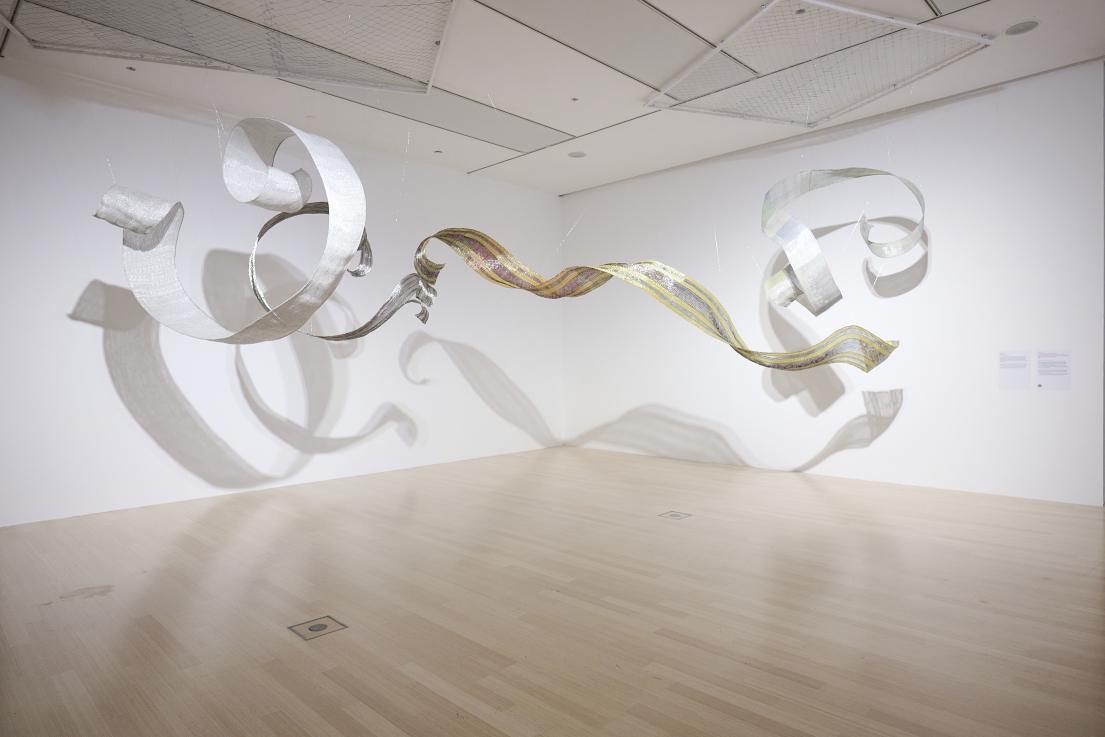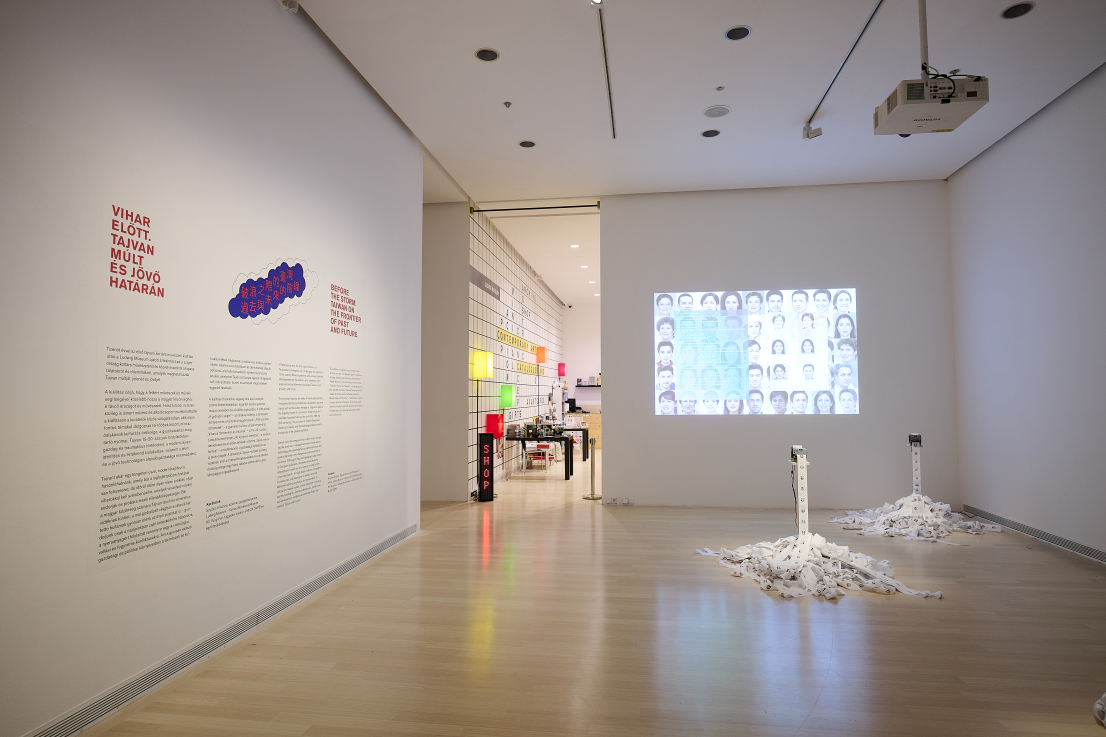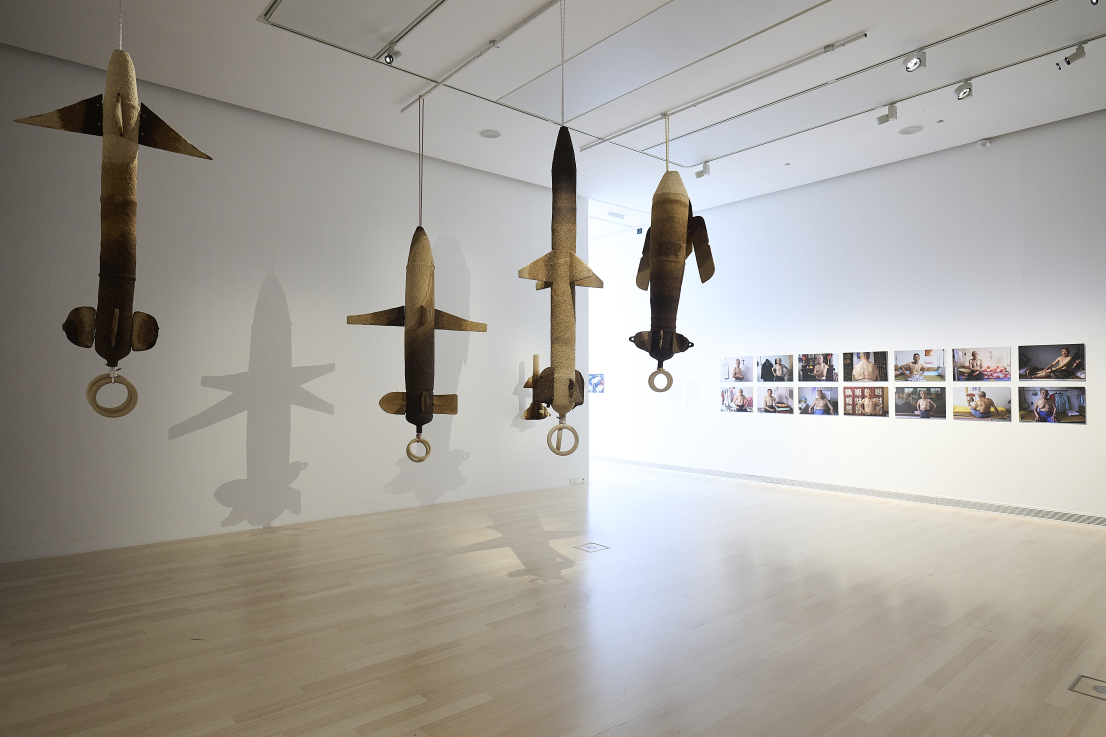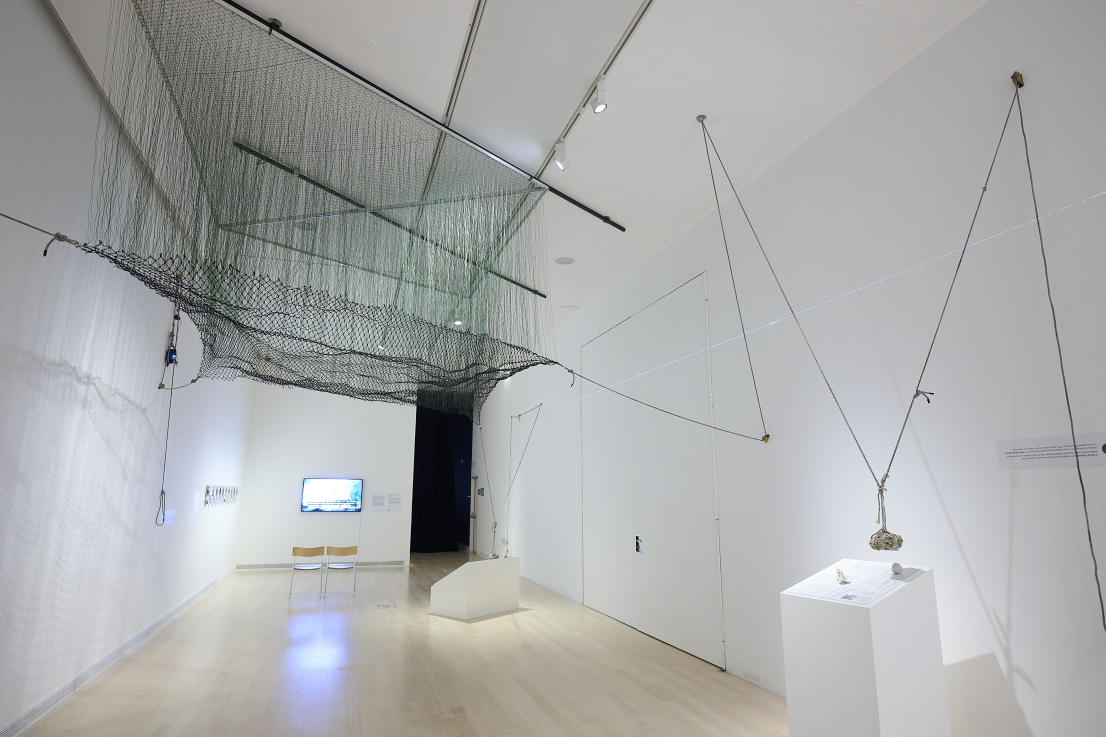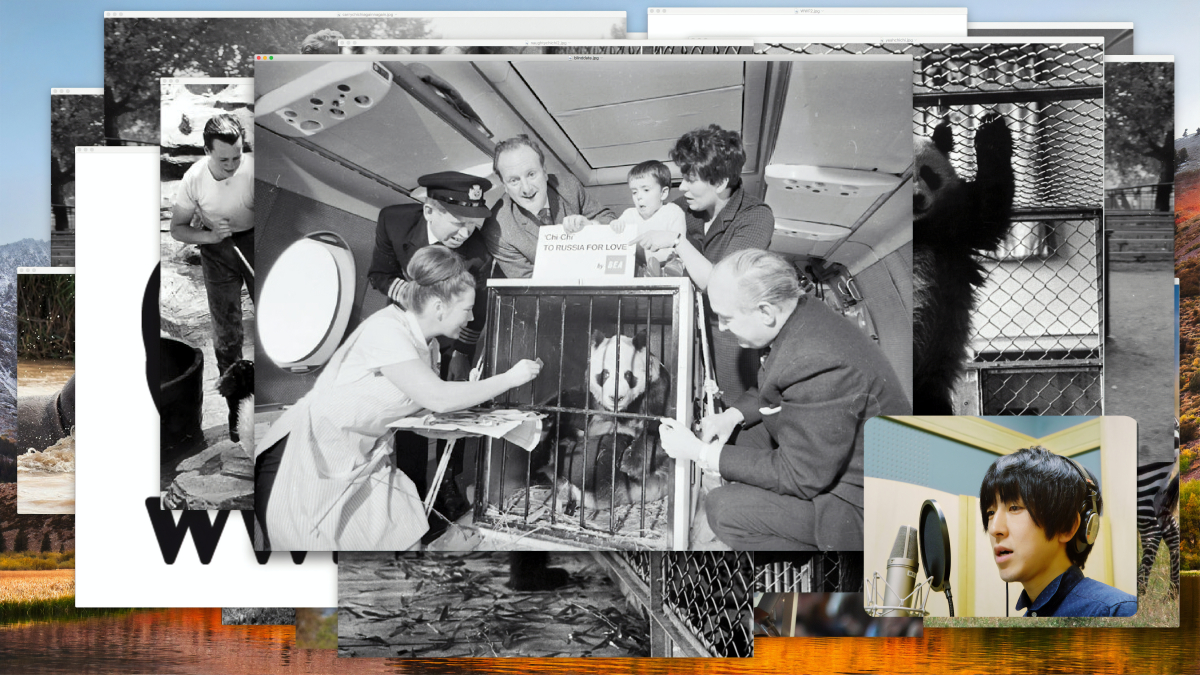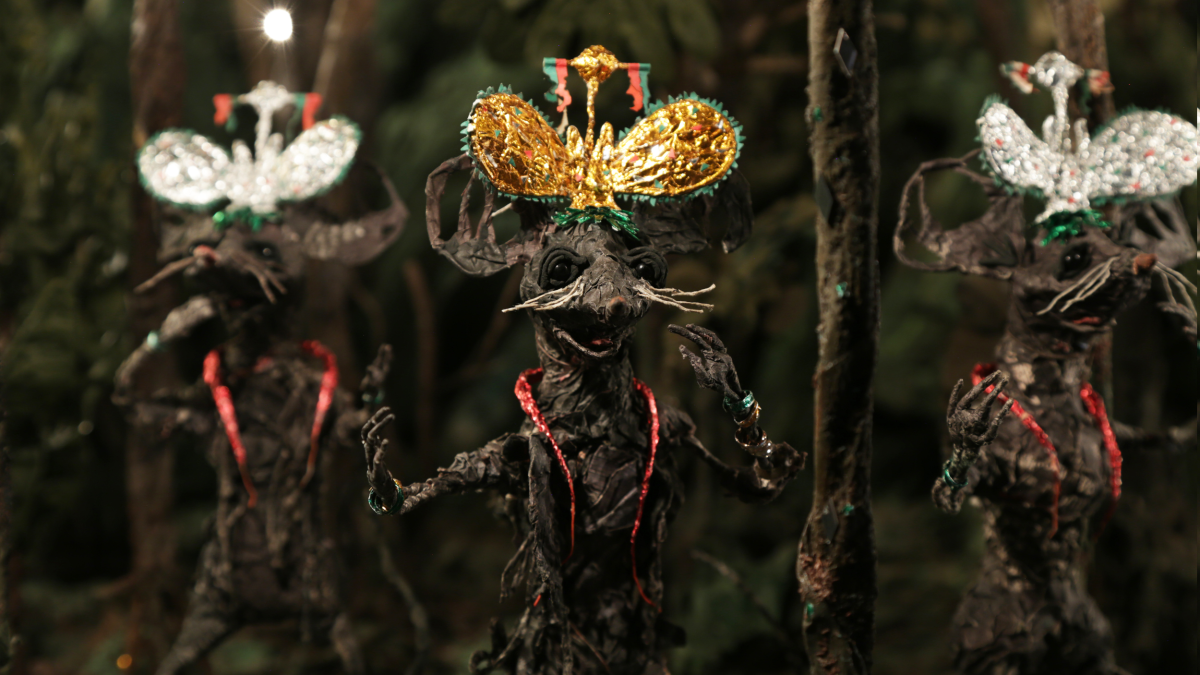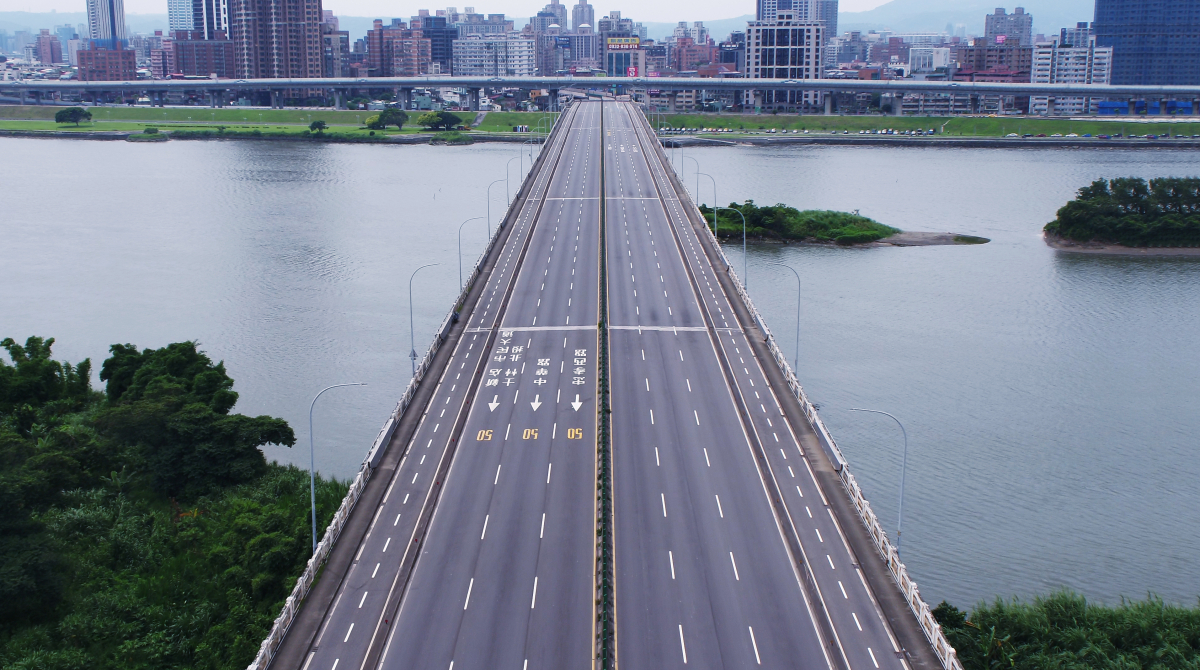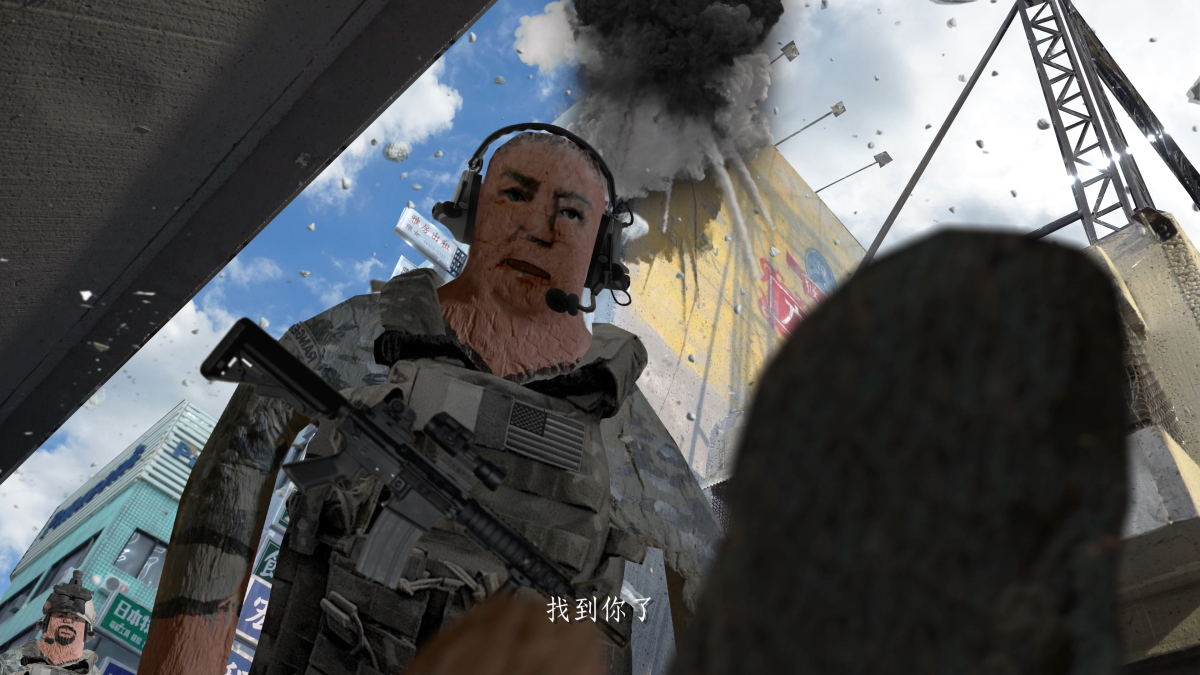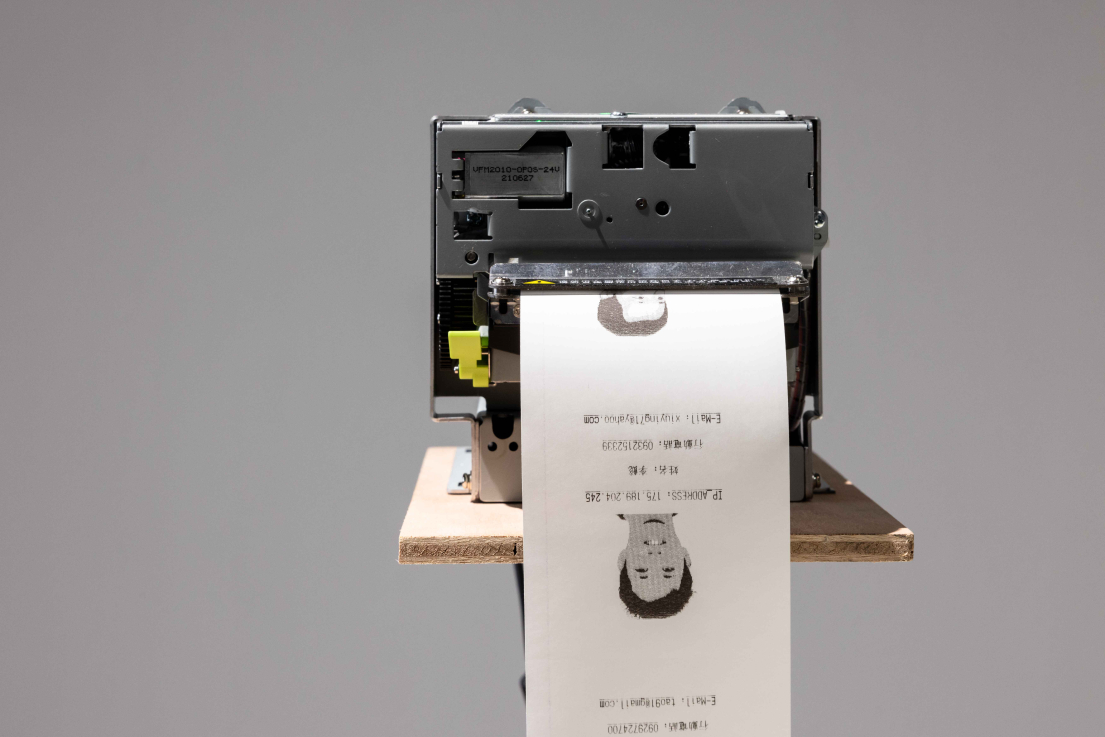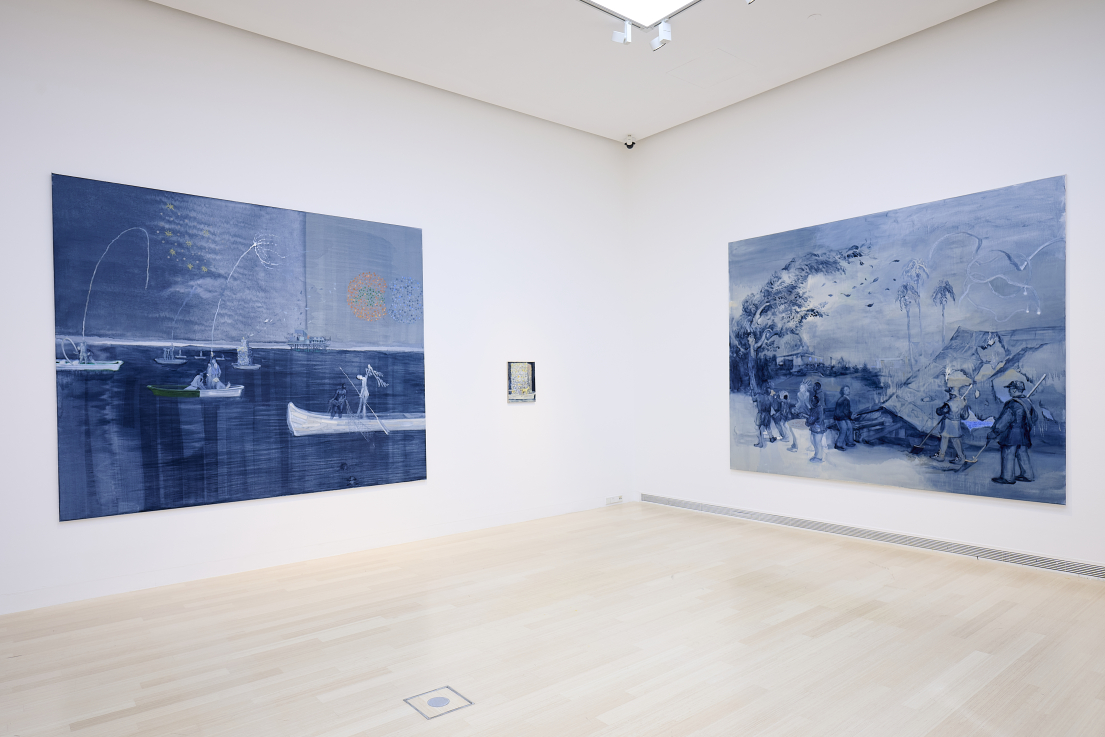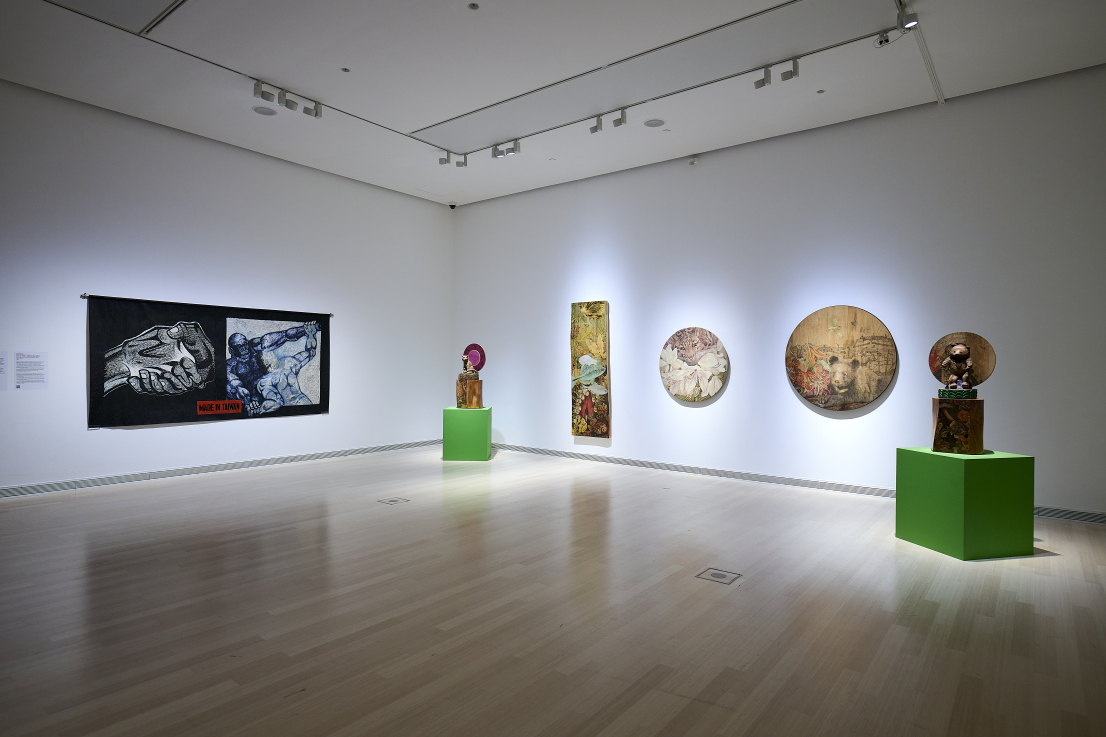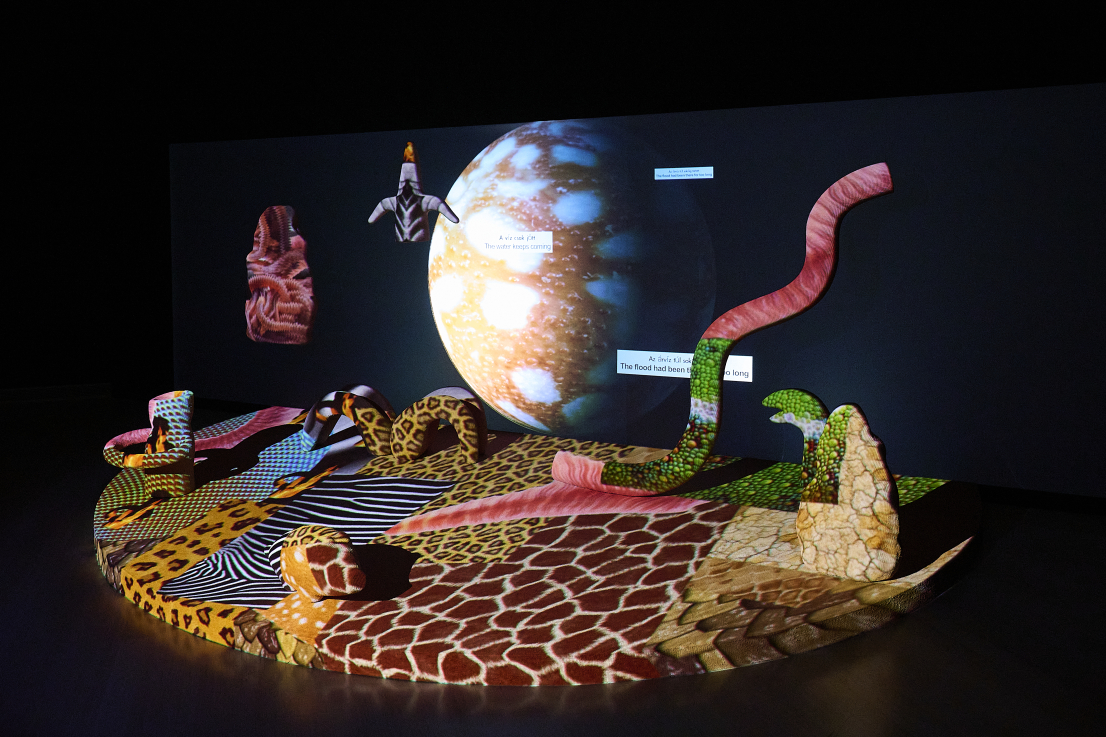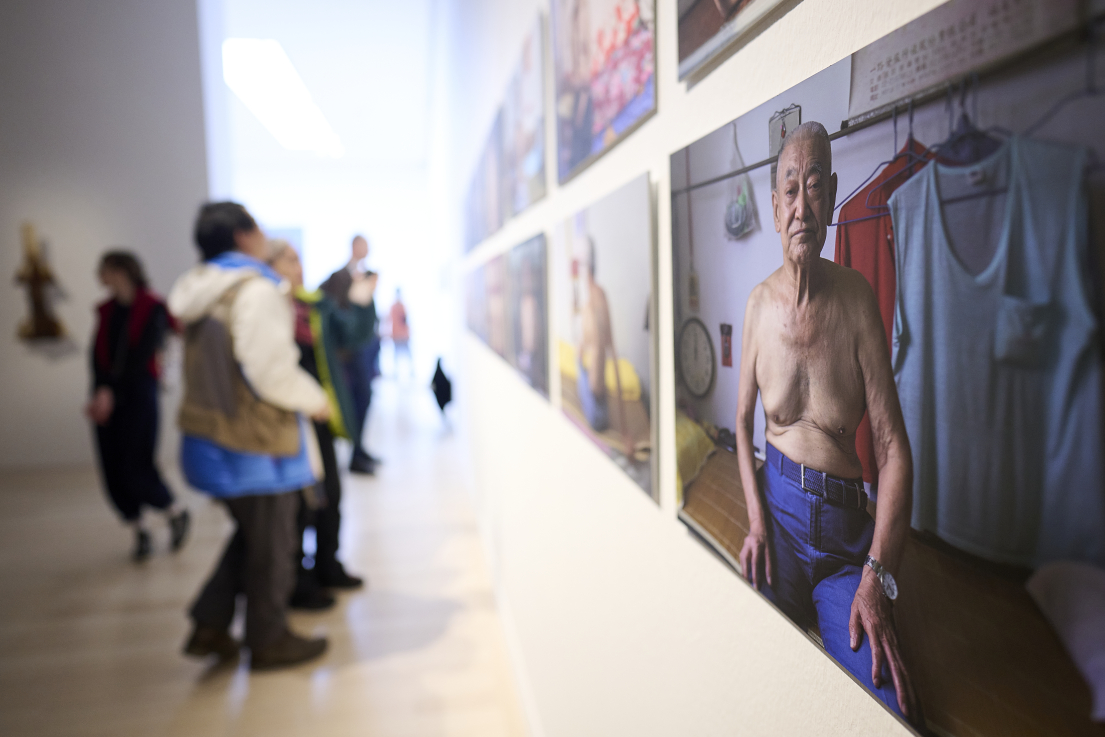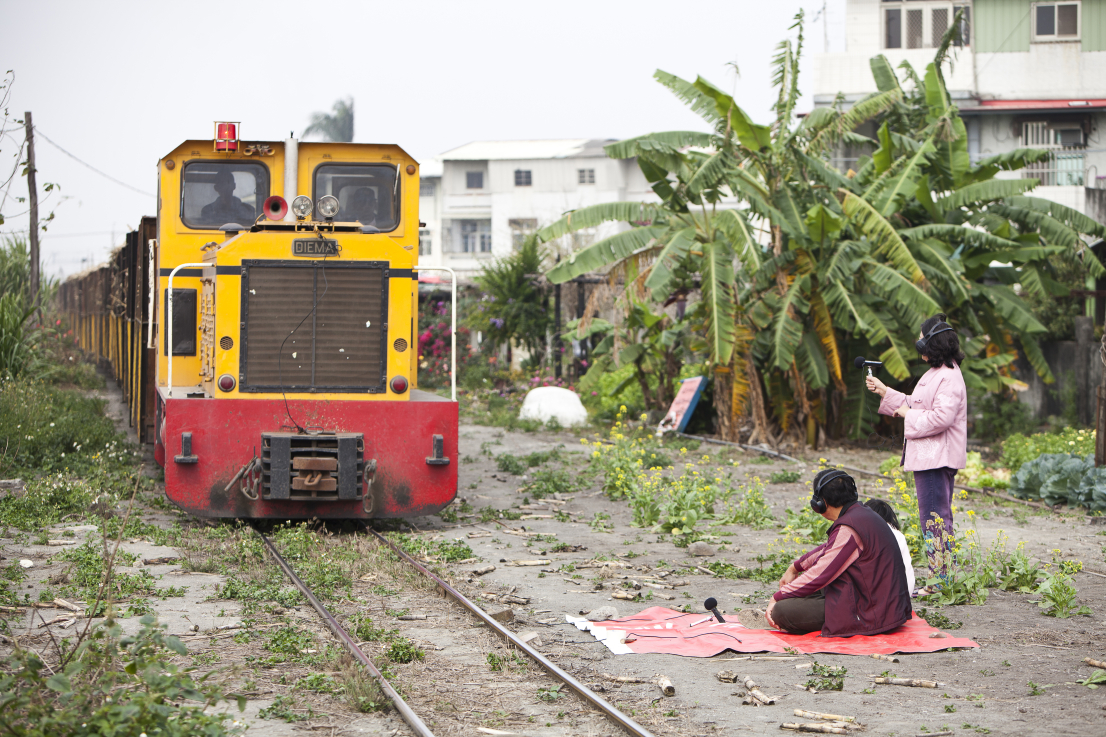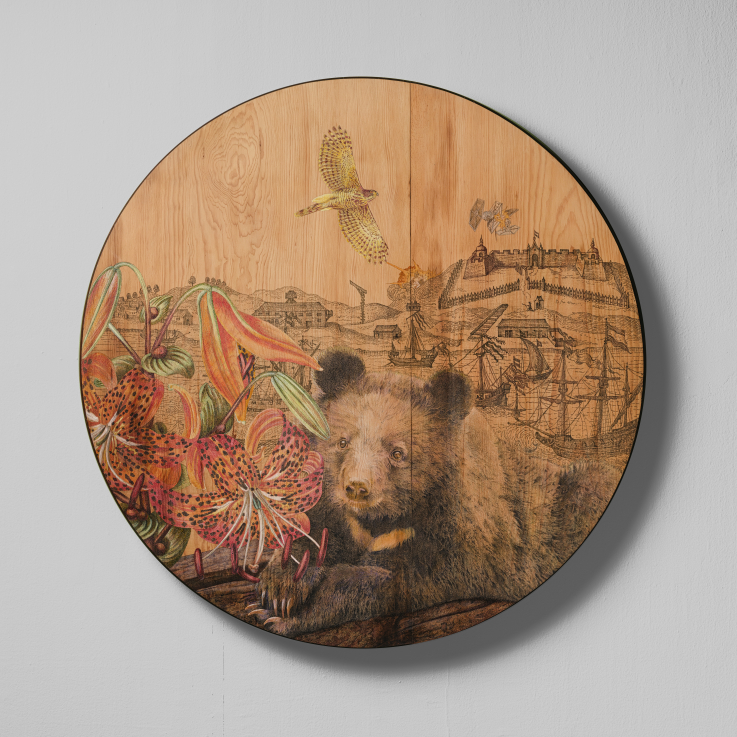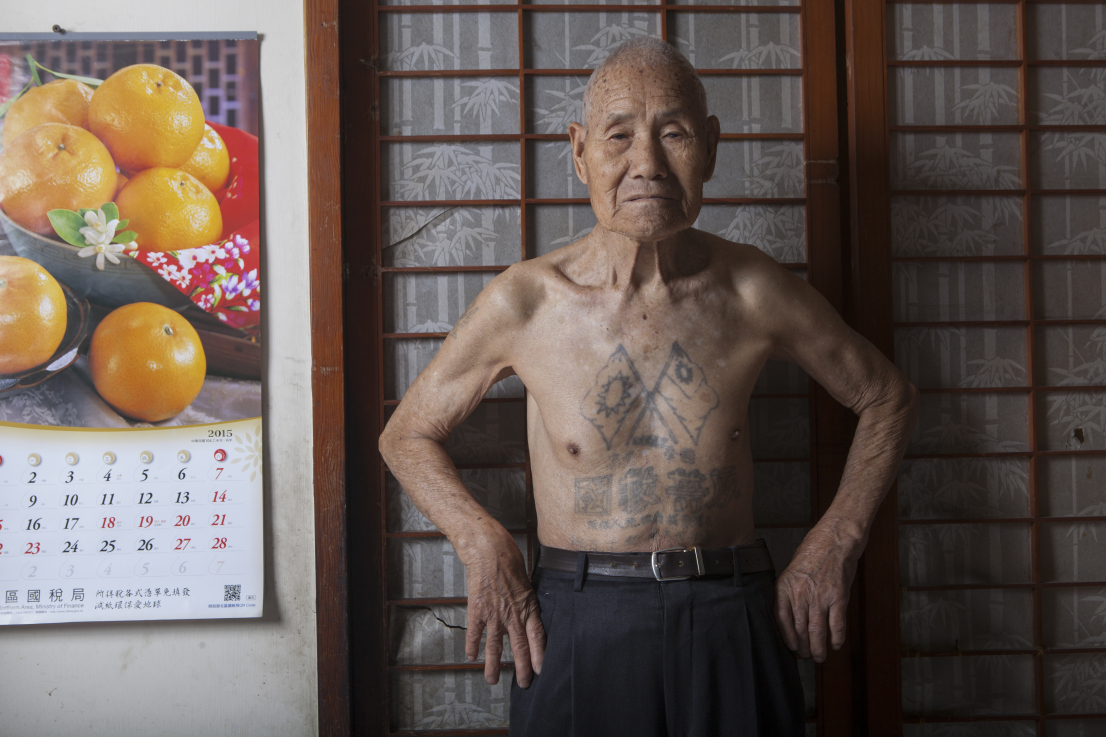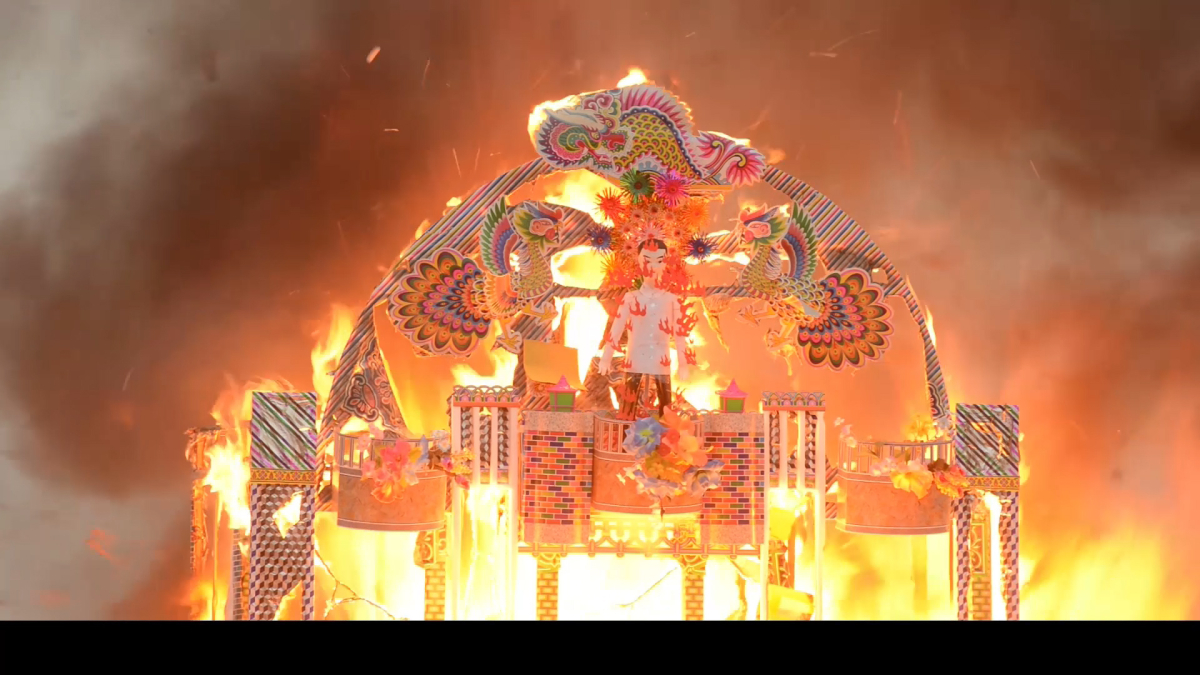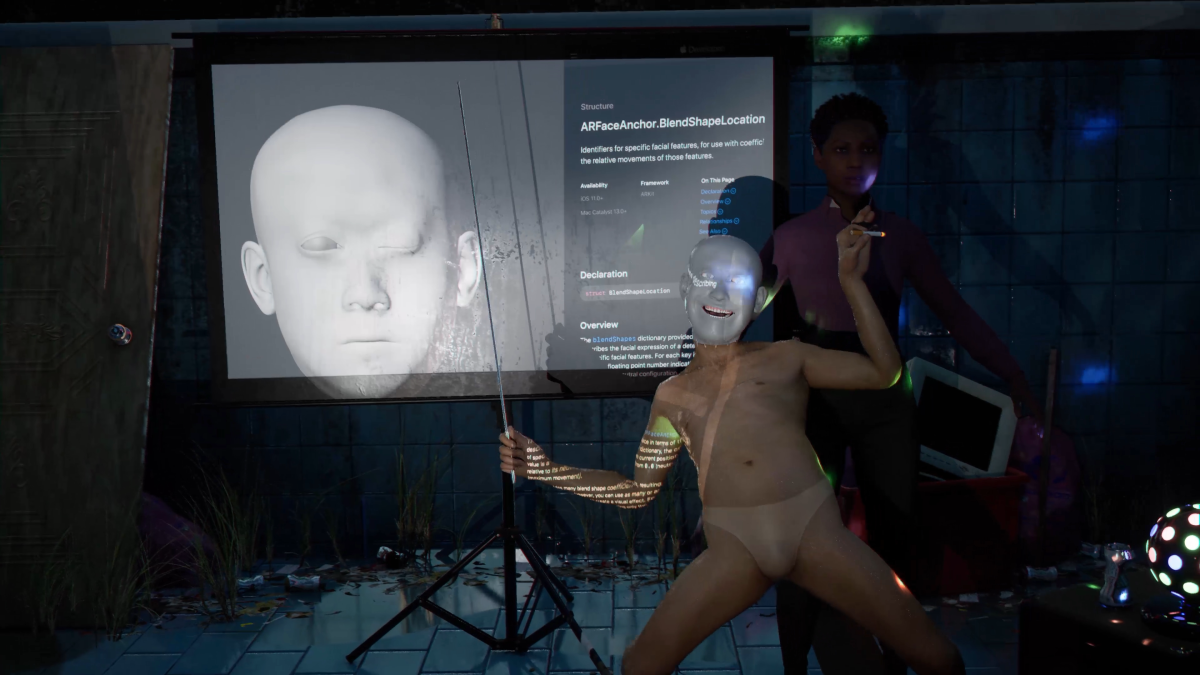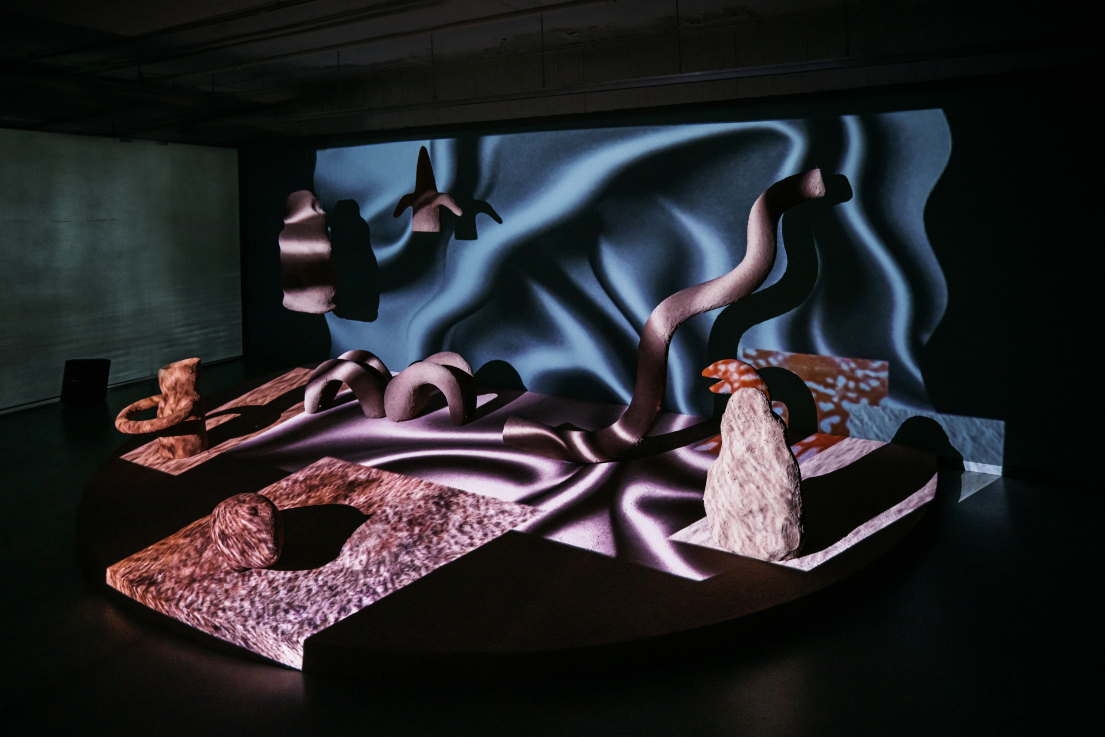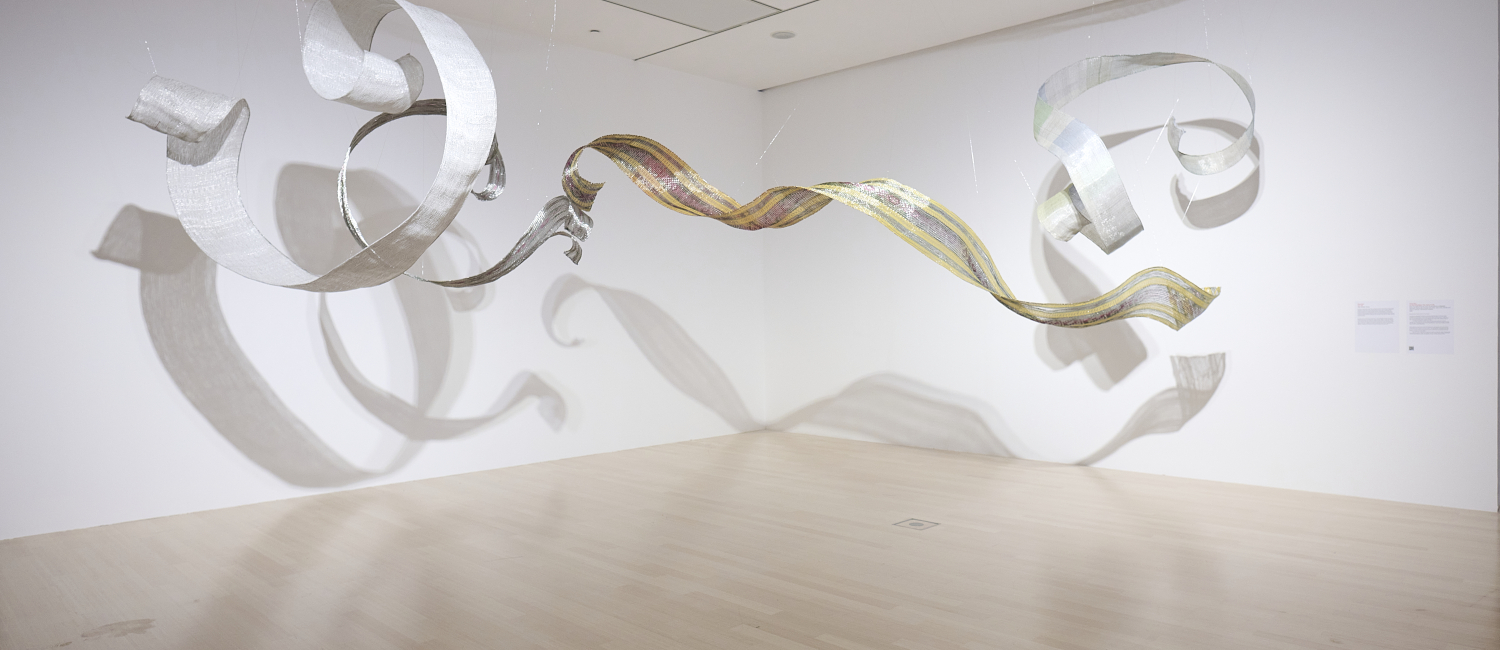The exhibition is open: 15 November 2025 – 29 March 2026
The exhibition at the Ludwig Museum presents an overview of artistic developments on the island – and, indirectly, of the experiences and dilemmas that shape Taiwan’s past, present, and future.
The selection features the works of twenty internationally recognized artists and collectives who address important topics such as the cultural heritage of indigenous people, the lingering traces of colonization, Taiwan’s turbulent and often traumatic history at the turn of the 19th and 20th centuries, the evolution of modern Taiwanese identity and values, and the technology-based economy and society of the present and future. The exhibited works are extremely diverse in terms of genre: in addition to installations, interactive projects, videos, and animations using the most innovative technologies, visitors can also encounter archaic techniques, paper works, paintings, and sculptures.
Taiwan could be compared to a modern vessel navigating the open sea – equipped with the most advanced technology, yet repeatedly facing elemental forces and storms that drive it into dangerous waters and test its resilience. Although it may seem geographically remote to European audiences, the waves stirred by these tempests soon reach our own shores in today’s interconnected world – through trade conflicts, competition for resources, and ideological or military tensions. Within this shifting landscape, the preservation of cultural and natural values, critical reflection on history, and the building of a resilient, democratic, and diverse society based on solidarity are shared ideals that connect Taiwan and Europe.
The exhibition is organized around five interwoven thematic sections: “The Beautiful Island” – Indigenous heritage, natural environment and cultural traditions; “Parallel Histories” – the colonial past and its imprints; “Turbulent Histories and Traumas” – the upheavals of the 19th and 20th centuries; “The New Taiwanese Identity” – modern democracy and contemporary values; and “Taiwan Today and Tomorrow” – modernization, economic progress, and new technologies. These themes guide visitors from Taiwan’s past into its present, where layers of history and culture converge and project multiple visions of the future.
The Beautiful Island
The origins, myths, and living traditions of Taiwan’s Indigenous communities form the foundation of works by Liu Yu, Chang En-Man, and Yuma·Taru. Liu Yu’s immersive installation evokes the motif of the deluge found in collective memory and creation myths through abstract forms and advanced digital technology. Chang En-Man explores Indigenous survival strategies within modernity and urbanization, using the story of the African giant snail introduced to Taiwan as a lens through which to reflect on cultural transformation. Her works trace connections between cuisine, textile motifs, and ancestral knowledge. Yuma·Taru, a member of the Atayal tribe, incorporates traditional weaving techniques into her contemporary practice, preserving and transmitting the worldview and philosophy of her community. Zhang Xu Zhan, a descendant of a century-old family of paper sculptors, transforms ritual paper figures once used in religious ceremonies into surreal animations that tell the story of traditional and contemporary metropolitan experiences of life and death. In turn, So Yo-Hen’s video Hua-Shan-Qiang examines the boundary between reality and imagination through the symbolism of death, ritual, and transcendence, invoking the metaphors of paper and fire as vehicles of memory and transformation.
Parallel Histories
ChihChung Chang investigates the relationship between history and personal memory within the contexts of colonization and the Cold War, focusing in his interactive installation on the instability and fluidity of Taiwan’s island geography. Chang Li-Ren likewise employs the language of animation to analyze the complex relationship between ordinary people and authority. Set within carefully constructed miniature models, his clumsy paper-mâché characters follow the heroic logic of superhero and action films as they attempt to destroy or save the world – for the glory of Taiwan and humankind – caught between global powers and political games, yet driven by childlike emotions and desires. The paintings of Chen Ching-Yuan revolve around passion and personal imagination: drawing on literature, mythology, history, and everyday experience, he constructs a distinctive pictorial universe where fragments of reality and fantasy merge.
Turbulent Histories and Traumas
Since the 1980s, Yang Mao-Lin has been a key figure in shaping Taiwanese contemporary art. He was among the first to challenge the taboos surrounding political authority, dictatorship, and the legacy of colonialism. His “Made in Taiwan” project explores the formation of cultural identity and the possibility of a unique Taiwanese visual language, using images of native species and geopolitical symbols to reflect on questions of cultural sovereignty. For more than three decades, Huang Tzu-Ming worked as a photojournalist, documenting Taiwan’s political, social, and cultural transformations before and after the end of martial law. His series Anti-Communist Tattoos on Korean War POWs portrays Chinese prisoners who, after the Korean War, were sent to Taiwan and bore anti-Communist tattoos – indelible traces of ideology etched on their skin. Hong-Kai Wang’s Music While We Work focuses on listening, recording, and the politics of memory. Created in collaboration with retired factory workers at an operating sugar refinery, the project reactivates history through sound, transforming labor into a shared act of remembrance and reflection.
The New Taiwanese Identity
The formation of Taiwan’s new identity is influenced not only by its past but also by the forces shaping its present. Using natural materials such as banana peel, tobacco, and sugarcane fiber, Lo Yi-Chun explores the histories and socio-political meanings of Taiwan’s economic crops, tracing how agriculture, politics, and globalization intertwine. Her “Bagasse Missiles” series exposes the transformation of “economic plants” from sources of sustenance into materials for industrial and military use, while also commenting on the absurdities of global geopolitics. The Your Bros. Filmmaking Group’s
On the Way Up Yushan interweaves the stories of an Indigenous porter and an environmental activist whose paths meet on Taiwan’s highest peak. Their narratives – blending memory, myth, and documentary – form a mountain built of recollections, where the boundaries between fact and fiction dissolve. Hsu Chia-Wei’s Black and White – Giant Panda revisits the history of “panda diplomacy,” revealing how the animal has become a symbol of political influence and cultural control. Through humor and irony, the work examines the mechanisms of soft power and the complex relationship between Taiwan and Mainland China.
Taiwan Today and Tomorrow
Today, Taiwan stands at the forefront of global technological progress. As one of the world’s leading manufacturers of semiconductors and microchips, it plays a pivotal role in the global economy, while its geopolitical position remains precarious. Yet technological advancement – a source of both pride and vulnerability – also raises new questions about the fragile equilibrium between humanity, society, and nature. Yuan Goang-Ming’s Everyday Maneuver reveals the normalization of military anxiety through the haunting vision of an empty city, while The 561st Hour of Occupation revisits the core questions of democracy. Chen Chun-Yu’s Back to Glory – Make ____ Great Again offers an ironic commentary on propaganda, militarized nationalism, and collective identity in an aging society where the elderly are called to serve the cause of “national glory.” Cheng Hsien-Yu’s It Could Be You addresses the instability of digital identity and the dangers of the data world. By generating algorithmic portraits that appear familiar yet belong to no one, the work warns of the blurring line between digital fabrication and reality. Li Yi-Fan’s installation investigates the illusions of digital power and human agency in an age when participation itself is mediated by technology and algorithms. Simple Noodle Art (Chen Zi-Yin, Chuang Hsiang-Feng) examines the interaction between technology and humans by presenting how screen-based artificial light alters our perception of time and contemporary ways of life.
In contrast, Lee Mingwei’s The Mending Project returns to the world of real people and tangible relationships. Through gestures of care, attention, and time, the artist proposes the rebuilding of community ties. The act of mending – a quiet yet radical gesture – stands against division and aggression, embodying empathy and solidarity as possible foundations for a future society.
Curators
Krisztina Szipőcs (Ludwig Museum, Budapest)
HU Yung-Fen (independent curator in collaboration with MoCA TAIPEI)
Exhibiting Artists
CHANG En-Man, CHANG Li-Ren, ChihChung CHANG, CHEN Ching-Yuan, CHEN Chun-Yu, CHENG Hsien-Yu, HSU Chia-Wei, HUANG Tzu-Ming, LEE Mingwei, LI Yi-Fan, LIU Yu, LO Yi-Chun, Simple Noodle Art (CHEN Zi-Yin, CHUANG Hsiang-Feng), SO Yo-Hen, Hong-Kai WANG, YANG Mao-Lin, Your Bros. Filmmaking Group (SO Yo-Hen, TIEN Zong-Yuan, LIAO Hsiu-Hui), YUAN Goang-Ming, Yuma·Taru, ZHANG XU Zhan
The exhibition was supported by the Ministry of Culture, Taiwan, and organized in collaboration with MoCA TAIPEI.
